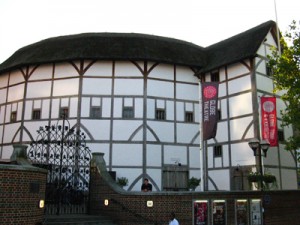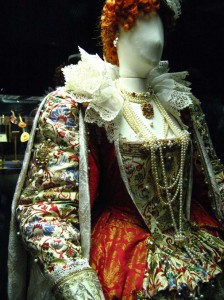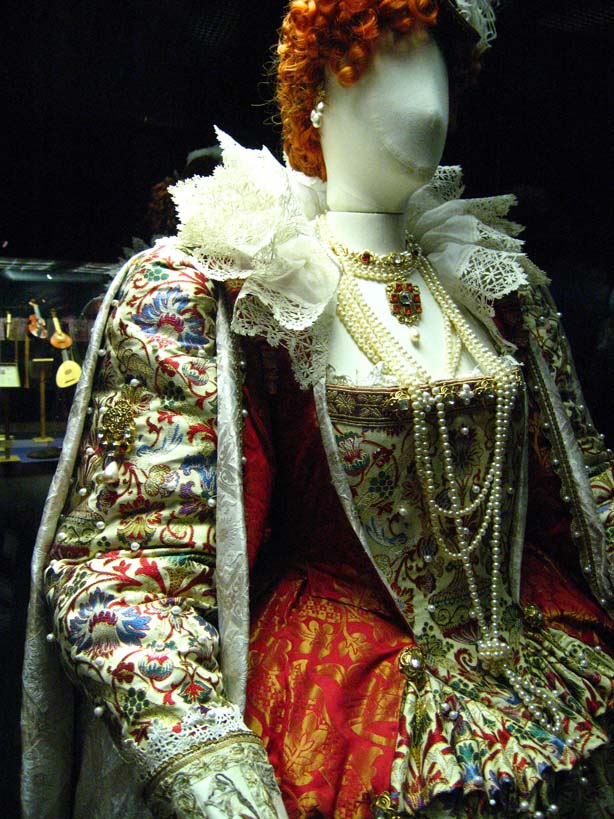 |
| Exterior of the Globe Theatre on the South Bank, 21 New Globe Walk, Bankside. Photo © Heather Shimmin |
Shakespeare’s Globe Theatre is the result of one man’s vision to have an accurate recreation of the Globe Theatre built not 300 yards from where the original theatre on the banks of the Thames stood until 1642 when it was shut down by the Puritans.
Sam Wanamaker, an American actor and producer, came to London to work on a film and was appalled that the memory of the Globe Theatre was nothing more than a deteriorating, dingy plaque on the side of a building stating he Globe Theatre once stood there. The theatre where England’s most famous and influential playwright’s plays were performed deserved more. This event sparked a 30 year campaign to built a meticulously accurate replica of the Globe as close as possible to the original one.
Wanamaker was adamant that the Globe be as authentic and true to the original as possible. The Globe was made using the same tools and techniques that the Elizabethans used; wooded pegs hold the English oak beams together; the thatched roof is made of local water reeds; every beam is hand cut, the jagged marks of tools visible to the passerby. Corners were not cut just to save time or costs.
THOUGHTS
The more I learn about this building, the more amazing it is to me. Authenticity and accuracy don’t stop at the construction of the building. It carries over into the costumes, the stage, the props, and even the acting techniques.
All of the costumes are made using Elizabethan sewing and construction techniques. The Globe relied heavily upon Janet Arnold, the industry expert in Elizabethan clothing construction. Arnold has compiled several volumes of books detailing construction methods, patterns, and materials based on years of research. The costume for Queen Elizabeth has over 1,400 pearls sewn on it. Since no velcro, snaps, or zips existing during that period, it would take two people 90 minutes the dress the actress, fastening an elaborate set of hooks.
The fabric was based on 16th century patterns. All fabrics are hand dyed using traditional dyes, such as berries and beetles. The level of detail is astounding.
 |
| Costume won by Actress Jane Lapotaire in Elizabeth I. Photo © Heather Shimmin |
In Shakespeare’s day, they would cram 3,000 people into the theatre. Today, they sit about 1,600. The Groundlings stood body to body, and with no public toilets, they would just relieve themselves wherever they were. I bet the smell was lovely.
Many unexpected surprises have come out of the Globe from a researcher’s point of view. Audience reaction and behavior has been studied during performances at the theatre and the findings were very interesting. Audience members are much more aware of the actors and of each other because the performances are done during the day, using only natural light. Instead of sitting next to strangers in the dark, as in a traditional theatre, the audience can look around and daydream or be influenced by the reaction of other audience members.
The actors, too, have a different relationship with the audience, especially the Groundlings. Being in such close proximity to the stage, an energy passes between them, an unspoken language. Having gone to a performance of Dr. Faustus at the Globe a few weeks earlier as a Groundling, I understand exactly what that connection is. It is powerful and unique and amplified by the setting.
The Globe Theatre is an amazing building and has proved the skeptics wrong. Some critics even went so far as to say that Wanamaker was going to turn Shakespeare’s Globe into an Elizabethan theme park.
How wrong they were.
